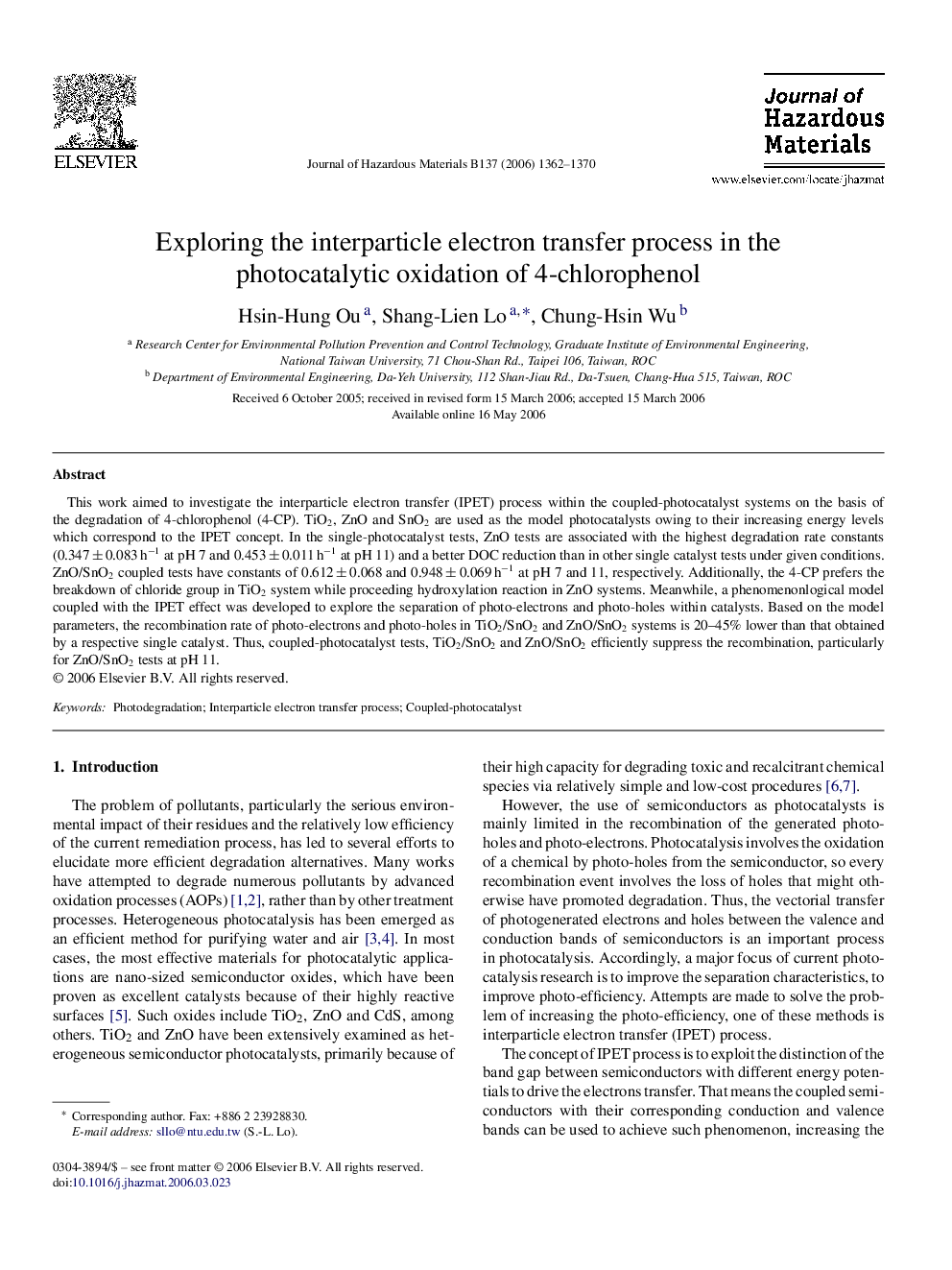| Article ID | Journal | Published Year | Pages | File Type |
|---|---|---|---|---|
| 585096 | Journal of Hazardous Materials | 2006 | 9 Pages |
Abstract
This work aimed to investigate the interparticle electron transfer (IPET) process within the coupled-photocatalyst systems on the basis of the degradation of 4-chlorophenol (4-CP). TiO2, ZnO and SnO2 are used as the model photocatalysts owing to their increasing energy levels which correspond to the IPET concept. In the single-photocatalyst tests, ZnO tests are associated with the highest degradation rate constants (0.347 ± 0.083 hâ1 at pH 7 and 0.453 ± 0.011 hâ1 at pH 11) and a better DOC reduction than in other single catalyst tests under given conditions. ZnO/SnO2 coupled tests have constants of 0.612 ± 0.068 and 0.948 ± 0.069 hâ1 at pH 7 and 11, respectively. Additionally, the 4-CP prefers the breakdown of chloride group in TiO2 system while proceeding hydroxylation reaction in ZnO systems. Meanwhile, a phenomenonlogical model coupled with the IPET effect was developed to explore the separation of photo-electrons and photo-holes within catalysts. Based on the model parameters, the recombination rate of photo-electrons and photo-holes in TiO2/SnO2 and ZnO/SnO2 systems is 20-45% lower than that obtained by a respective single catalyst. Thus, coupled-photocatalyst tests, TiO2/SnO2 and ZnO/SnO2 efficiently suppress the recombination, particularly for ZnO/SnO2 tests at pH 11.
Keywords
Related Topics
Physical Sciences and Engineering
Chemical Engineering
Chemical Health and Safety
Authors
Hsin-Hung Ou, Shang-Lien Lo, Chung-Hsin Wu,
